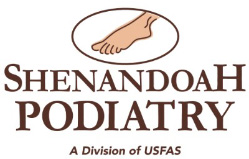
Are your children complaining of heel pain? It’s important to know the difference between adult and children's heel pain. Most cases of adult heel pain are due to plantar fasciitis, but kids don’t get this condition. Instead, a child’s heel pain is usually an inflammation of the growth plate in the back of the heel. If your children are between the ages of 8 and 15, they could be suffering from growth plate pain. In this blog post, we will discuss what you need to know about childrens heel pain and how to address it.
Plantar Fasciitis in Adults vs. Growth Plate Inflammation in Children
Heel pain is a common complaint in both adults and children, but the causes of the pain differ greatly between the two groups. Adults most commonly experience heel pain due to Plantar Fasciitis, while children often suffer from growth plate inflammation.
Children's feet are not fully developed, and their growth plates are still actively growing and maturing.
The growth plate in the heel is located in the back of the heel, and can become inflamed due to stress and overuse. This is commonly seen in children playing sports, as the repetitive impact and stress on their feet can cause discomfort and pain.
In contrast, Plantar Fasciitis in adults is usually caused by repeated stress to the ligament that runs along the bottom of the foot, which can cause small tears and inflammation. This is often seen in adults who spend long hours on their feet, or who participate in high-impact activities like running or jumping.
Understanding the differences between these two conditions is important in order to properly diagnose and treat the cause of heel pain in children and adults. By understanding the unique needs of children's feet, parents and healthcare providers can help prevent and treat foot pain in children and keep them active and healthy.
Understanding the Growth Plate and its Importance
The growth plate, also known as the epiphyseal plate, is a layer of cartilage that exists at the end of long bones in children's feet. This cartilage layer is responsible for the growth and development of bones as a child grows taller. Once growth is complete, the cartilage transforms into solid bone.
The growth plate in the heel bone, specifically, is crucial to a child's mobility and balance. It's where the Achilles tendon attaches, providing the necessary support and stability for movement.
However, children's foot pain can result from damage or inflammation of the growth plate. This type of pain is most commonly caused by excessive pressure or repetitive impact, especially in children playing sports or dancing.
Related post: How to Choose the Right Sports Cleats For Your Feet and Ankles
As parents, it's important to understand the growth plate's significance in our children's feet. By recognizing the potential causes of growth plate pain, we can help prevent it and promote healthy foot development.
Common Causes of Growth Plate Pain
As mentioned earlier, growth plate pain in children’s feet is a common condition that affects kids between the ages of 8 and 15. The growth plate in the heel is susceptible to injury due to the rapid growth of the bones during this stage. Here are some common causes of children’s foot pain:
- Overuse: Children who are involved in high-impact sports such as basketball, soccer or gymnastics are at a higher risk of developing growth plate pain. The repetitive impact of the feet on the ground can cause inflammation and pain.
- Poorly fitting shoes: Wearing shoes that are too tight or too loose can put pressure on the heel, causing irritation to the growth plate. It’s important to ensure that your child’s shoes fit well and are supportive.
- Flat feet: Children with flat feet are more likely to develop growth plate pain. Flat feet can cause the heel to tilt inwards, leading to an uneven distribution of weight on the foot.
- Obesity: Being overweight can put extra strain on the feet and increase the risk of heel pain in children.
- Trauma: A fall or any other trauma to the foot can cause damage to the growth plate, leading to pain and inflammation.
It’s important to note that in some cases, the cause of children’s foot pain may not be immediately clear. Consulting your local podiatrist can help determine the root cause of the pain and ensure that proper treatment is administered.
Signs and Symptoms to Look For in Your Child's Foot Pain
As a parent, it’s important to be aware of any signs and symptoms that your child may be experiencing foot pain. Here are a few things to look out for:
Complaints of pain in the heel, particularly during or after physical activity- Limping or favoring one foot over the other
- Difficulty walking or standing for extended periods of time
- Redness or swelling around the heel area
- Pain that is worse in the morning or after periods of rest
It’s important to note that children’s feet are constantly growing and changing, which means they may experience occasional aches and pains as a normal part of development. However, if your child is experiencing persistent or severe foot pain, definitely have them evaluated by your local Roanoke podiatrist to determine the underlying cause.
Foot pain in children should not be ignored and can often be effectively treated if caught early.
Diagnosis and Treatment Options in Roanoke
The diagnosis of growth plate inflammation typically involves a physical exam and X-rays to confirm the condition and rule out any fractures or other conditions. In rare cases, MRI scans may be necessary.
Treatment for children's foot pain caused by growth plate inflammation usually involves rest and immobilization. This may mean refraining from activities that may have caused the pain or using crutches to take weight off of the affected foot. Ice and over-the-counter pain medication may also be recommended to help alleviate symptoms.
With proper treatment and rest, most cases of growth plate inflammation will resolve within a few weeks.
Prevention is key when it comes to kids' feet and children's foot pain. Ensuring that your child wears supportive and properly-fitted shoes and engaging in regular physical activity can help to strengthen their muscles and reduce their risk of injury. In addition, regular foot and ankle stretching exercises can also help to promote foot health and prevent heel pain in children.
Your children's feet are in the best hands with Shenandoah Podiatry.

